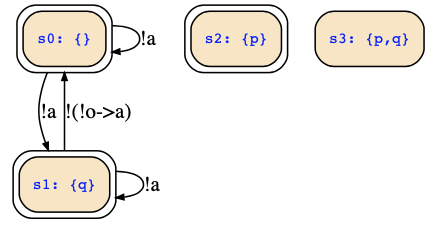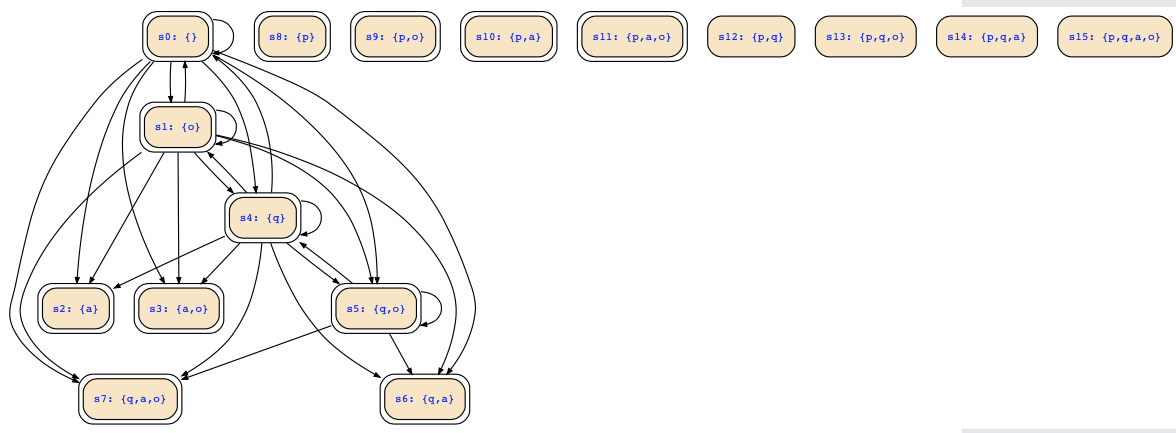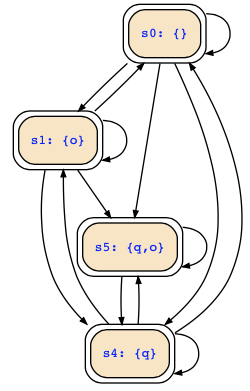Hmh, I don't know exactly what you want, but let me explain what often needs to be done when dealing with symbolic representations of FSMs and Kripke structures.
Assume you are given a FSM with state variables p,q and input/output variables a,o and the following initial states and state transitions:
I = !(p&q)
R = !((q&o->next(q))->next(p)|p|a)
You can use https://es.cs.uni-kl.de/tools/teaching/SymbolicStateTrans.html with the following inputs to generate the state transition diagram of the FSM:
state variables : p,q
input variables : a,o
initial states : !(p&q)
transition relation : !((q&o->next(q))->next(p)|p|a)
state set : false
The state set given does actually not matter for our purpose here. We come to that later. The tool will generate the FSM which looks as follows:

If you now want to see the Kripke structure, you just have to change the input as follows:
state variables : p,q,a,o
input variables :
initial states : !(p&q)
transition relation : !((q&o->next(q))->next(p)|p|a)
state set : false
This means that there are no input variables and the former input/output variables are now state variables that will form the labels for the states. The rest remains the same.The tool will now show you the Kripke structure, but that will contain deadend states:

If you want to get rid of the transitions to deadend states, you first need to describe them in propositional logic. The deadend states are those states that satisfy pre∀(false), so you let the tool now compute the universal predecessors of false, and it will compute them in symbolic form as (p|a)&(!(q&o)->p|a) which is equivalent to p|a. You now have to state that you don't want to have transitions to these states, so you modify the transition relation as follows:
!((q&o->next(q))->next(p)|p|a) & !(next(p)|next(a))
In general, that may create new deadend states that you can also compute and cut off by adding another conjunct ot the transition relation. In the above example, this does however not happen, and you obtain the following:

Does that approach to the answer of your question?